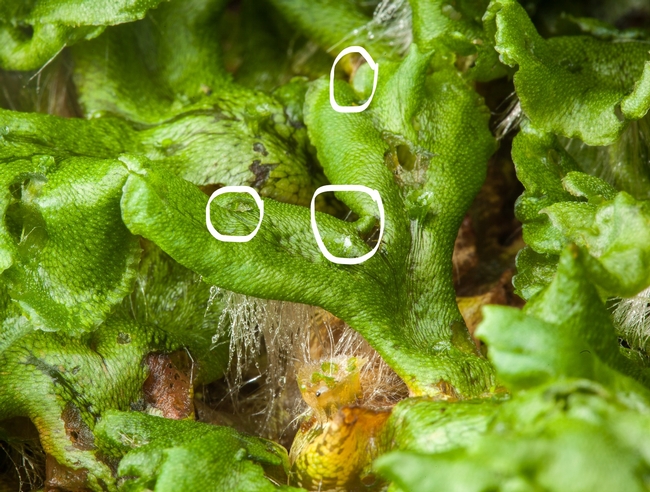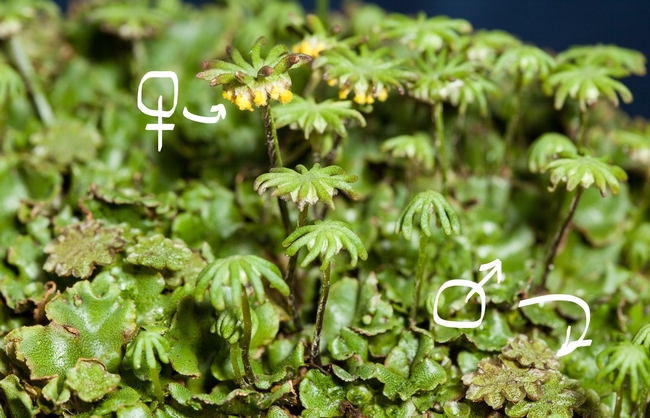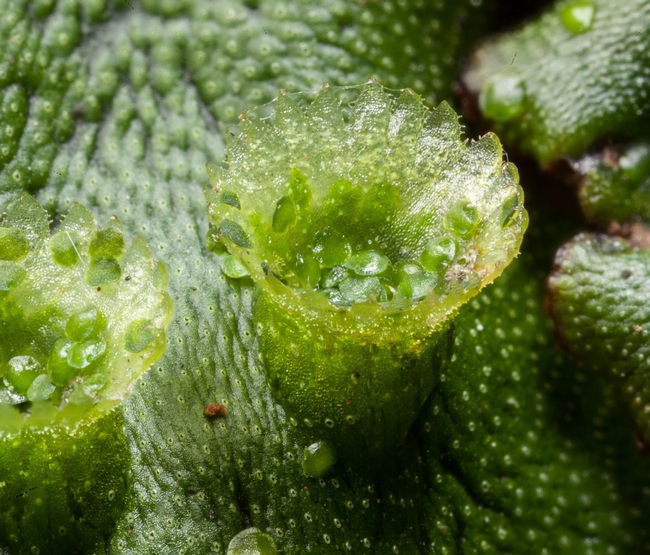Liverworts do not have the typical propagules associated with other common weeds. They don't have seeds or asexual propagules such as rhizomes and stolons that can spread and establish as new plants. However, growers wonder how liverworts can become so widely established in the nursery or greenhouse.

Probably the most important asexual spread in nurseries and greenhouses is a result of gemmae. On the upper surface of the liverwort there are 3 to 4 mm cup-like structures called gemma cups, and at the bottom of each gemma cup over a hundred tiny, disk-shaped gemmae can be produced. When water droplets from rain, sprinkler, or an irrigation wand hits the gemma cups, the gemmae are propelled out and can develop into separate plants. Each gemmae produces a clone of its mother plant.

When spores are released they can be spread by air currents. Each female structure produces spores by the thousands. They are very small (less than 3.5 microns in diameter when dry), on the smaller side of most aerially dispersed fungal spores and pollen (which range from 3 to 100 microns). See for yourself in this video below. I recorded in a calm, darkened office. (Be patient for about 20 seconds). When I opened the office door and the fresh air came in, whoosh, away flew the spores. In the office, not a big deal; when it happens in your nursery or greenhouse, it is a big deal. These spores might move significant distances even with the slightest of air movement!
Next week: what happens after the spores land in your nursery or greenhouse, and management options.
Spore Release video. Use full screen mode.
Attached Files:
